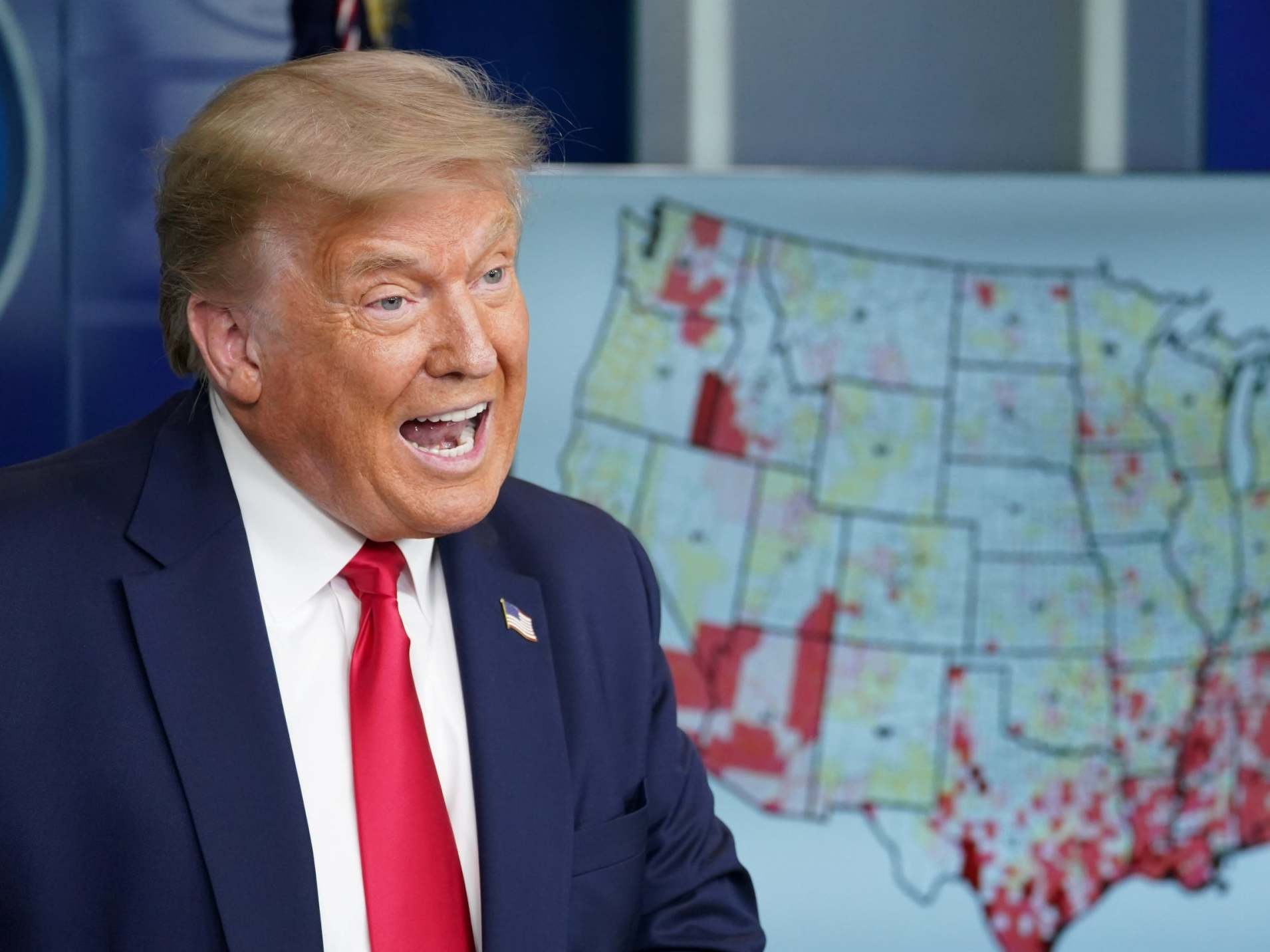'#TrumpVirus': Why did Trump call Twitter's trending topics 'illegal'?
It is the latest in a series of attacks from the president against the social media site

Donald Trump has continued his dispute with Twitter after tweeting that the company’s trending topics section is “illegal” because they are critical of his presidency.
Mr Trump did not produce any evidence to reinforce his claim.
Twitter’s trending topics are not illegal, nor are they curated by Twitter employees.
The president has repeatedly made efforts to protect the First Amendment, which he believes is under attack due to the bias of large technology companies against conservatives.
In fact, the First Amendment does not apply to private companies and the proposals made by the president would do more to limit free speech than protect it.
What did Mr Trump say?
“So disgusting to watch Twitter’s so-called 'Trending', where sooo [sic] many trends are about me, and never a good one," Mr Trump tweeted. "They look for anything they can find, make it as bad as possible, and blow it up, trying to make it trend. Really ridiculous, illegal, and, of course, very unfair!”
What is Twitter’s “Trending”?
Twitter trending algorithm highlights popular movements on the platform. These are tailored to specific users based on who they follow, what their interests are according to data collected by Twitter, and location information.
The algorithm “identifies topics that are popular now, rather than topics that have been popular for a while or on a daily basis, to help you discover the hottest emerging topics of discussion on Twitter,” according to the company’s website.
Twitter also points out that while the number of tweets about a particular trend is important, it is not the only factor that determines the trending bar.
“Algorithmically, trends and hashtags are grouped together if they are related to the same topic. For instance, #MondayMotivation and #MotivationMonday may both be represented by #MondayMotivation”, Twitter explains.
Twitter also says that it can prevent certain content from trending. This includes content containing profanity or adult references, hateful content based on protected categories such as race, gender, sexual orientation, or religion, as well as other content that violates Twitter’s rules.
If a trend is newsworthy, Twitter may consider keeping it up if the public interest outweighs the potential violation.
What was the cause of Mr Trump’s tweet?
When Mr Trump tweeted, #TrumpVirus was a prominent Twitter trend with many users criticising the president’s actions with regards to the coronavirus pandemic.
In the US, there have been 4.43m cases and more than 150,000 deaths. The country has become the new epicentre of the pandemic and the seventh-worst mortality rate.
Last week, as cases surged in California, Texas, Arizona and Florida, the president said that the coronavirus will “disappear” and that he will be “right eventually”.
The president claimed that coronavirus cases in the United States had increased because the country had increased testing, which had gone up 37 percent. Coronavirus cases, at the time, had increased by 194 percent.
Mr Trump also claimed that school-age children do not contract the virus or pass it on, which experts have said is not true. It is one of a series of incorrect statements about the virus.
What has Twitter said?
Twitter declined to comment. It has rarely publicly addressed Mr Trump's criticisms of the platform.
Is Twitter biased?
Conservatives have often claimed that Twitter, and other social media sites, are biased towards right-wing views. Twitter CEO Jack Dorsey has said in the past that while employees have a left-leaning bias, such biases do not affect how the company makes decisions over content on its platform.
Twitter has also provided an exception for ‘newsworthy’ content that breaks its terms and conditions but which nevertheless remains on the platform.
A Twitter account that copies what president Trump tweets was suspended in three days for glorifying violence.
Nevertheless, president Trump has taken action against social media sites by signing an executive order set to undo free speech protections.
Section 230 is a piece of American legislation that protects all website hosts – from Facebook to a personal website – from legal ramifications posted by users of that website.
This protects personal websites from being responsible for libellous content posted in its comment section, for example.
The president and other Republicans have said that Section 230 is contingent on a platform’s political neutrality. This is not the case.
FCC commissioner Brendan Carr had previously accused Twitter of “abandon[ing] any attempt at a good faith application of its rules” and making decisions “based on whether it approves or disapproves of their politics.”
However, while only congress can modify Section 230, experts believe that the threat of executive order could be enough to make technology companies change their behaviour to favour the president and his posts.
It could be that Mr Trump’s allegation that Twitter’s behaviour is “illegal” is for similar purposes. The Independent has contacted The White House for clarification.
Subscribe to Independent Premium to bookmark this article
Want to bookmark your favourite articles and stories to read or reference later? Start your Independent Premium subscription today.

Join our commenting forum
Join thought-provoking conversations, follow other Independent readers and see their replies